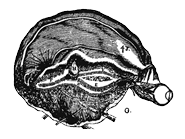
Cognition refers to bodily processes (mainly in the brain) which give rise to perceiving,
thinking and feeling. At least with the rise of consciousness (in man, possibly
in some hominids) perception, thought and sentiment are based on symbolic capacities.
Therefore all symbolic forms (language, myth, science; art, technology, laws etc.;
cf. the symbolic philosophy of Ernst Cassirer and as a comment Sandkühler et al.,
2003) have beyond their social and communicative functions a basis in the human
body (embodiment, neural dynamics, etc.). The concepts developed in the cognitive
sciences (a multidisciplinary field involving: neurology, anthropology, psychology,
computer science, linguistics and others) are applied to semiotics as are the methods
of research including experiments, computational and mathematical models. In relation
to cognitive grammar (cf. Wildgen 2008) cognitive semiotics applies these conceptualization
and methodologies to the domains beyond language, i.e. to visual semiotics,
vestimentary semiotics, literary
semiotics, cosmological semiotics,
pragmatics and others.
This field depends strongly on the current developments in biology (neural biology
and genetics) and on the simulation of cognitive faculties of the human (and animal)
brain by computers. The mathematical models apply the tools of dynamic systems theory;
cf. dynamical semiotics;
cf. for the cognitive basis of visual semiotics Petitot (2008).